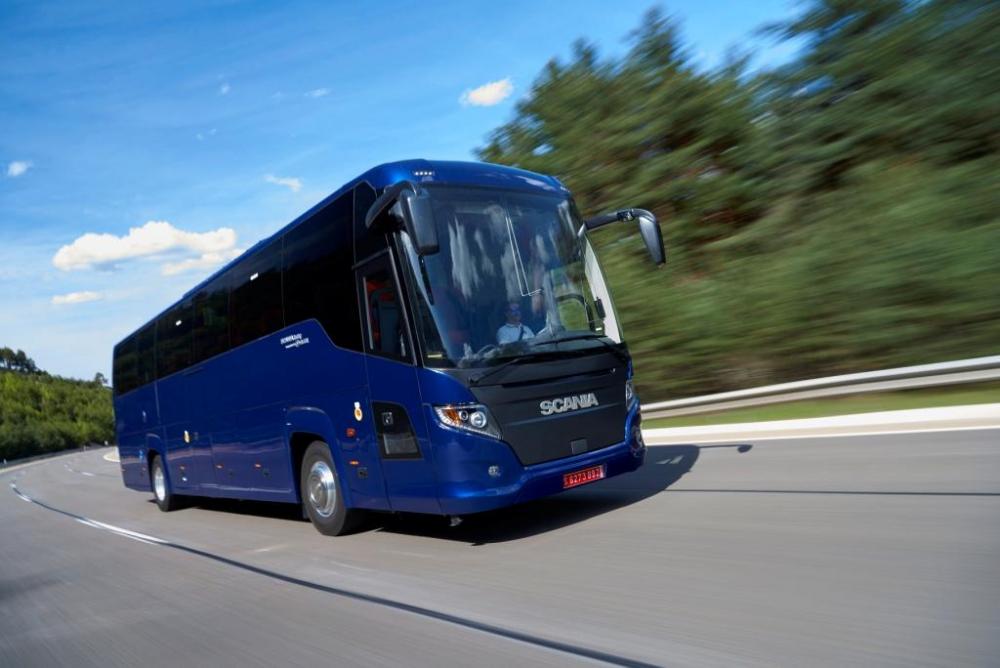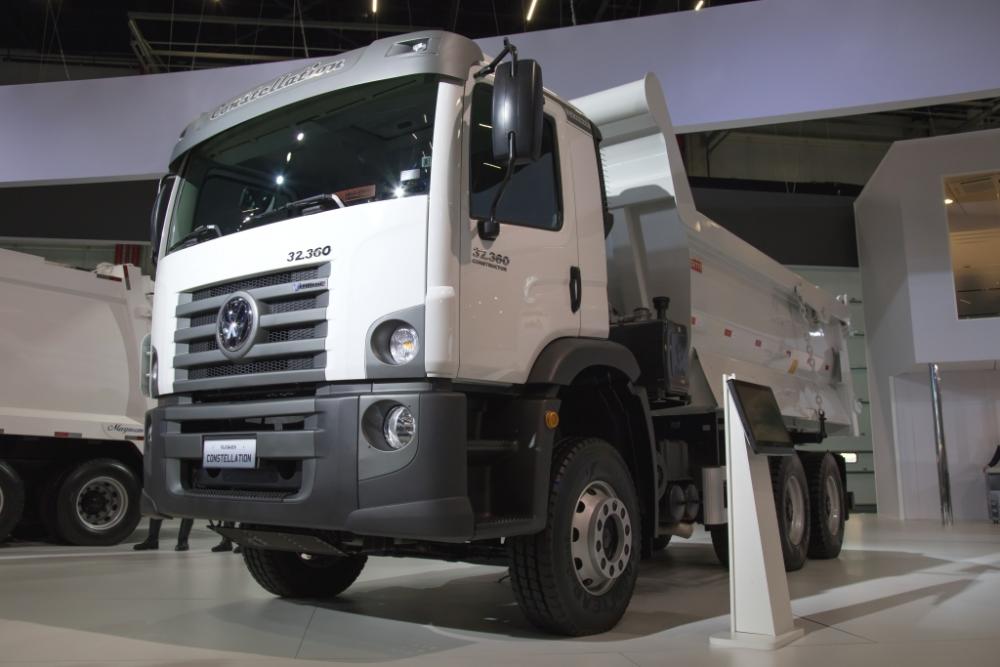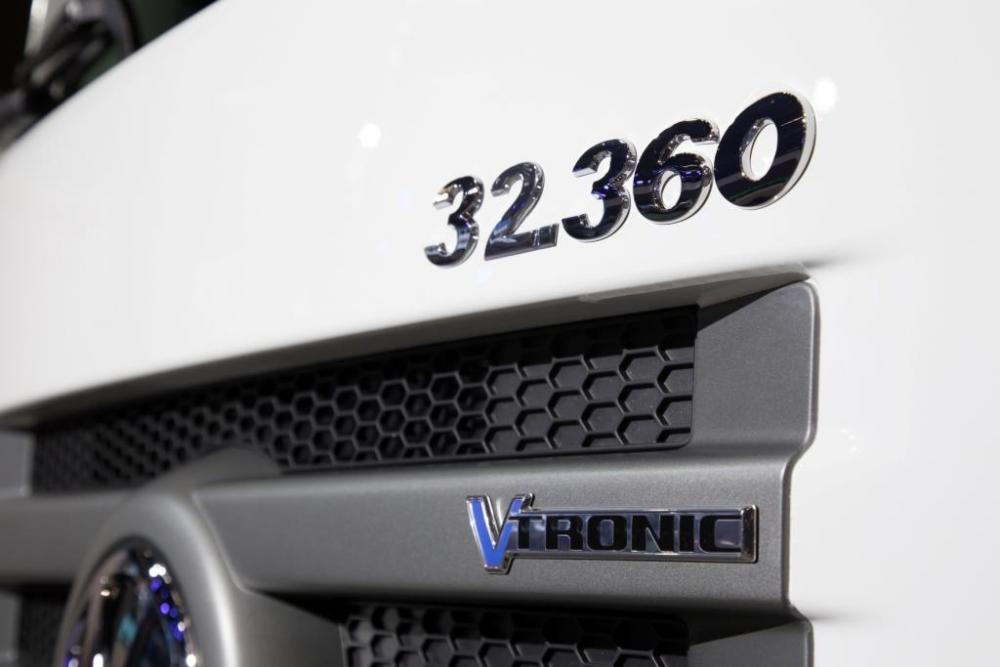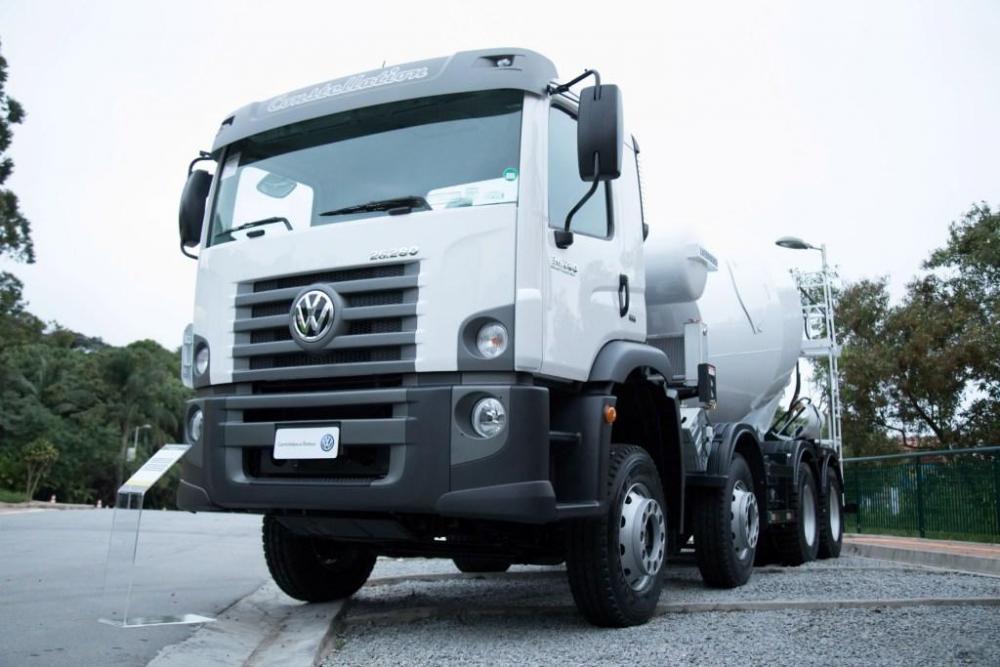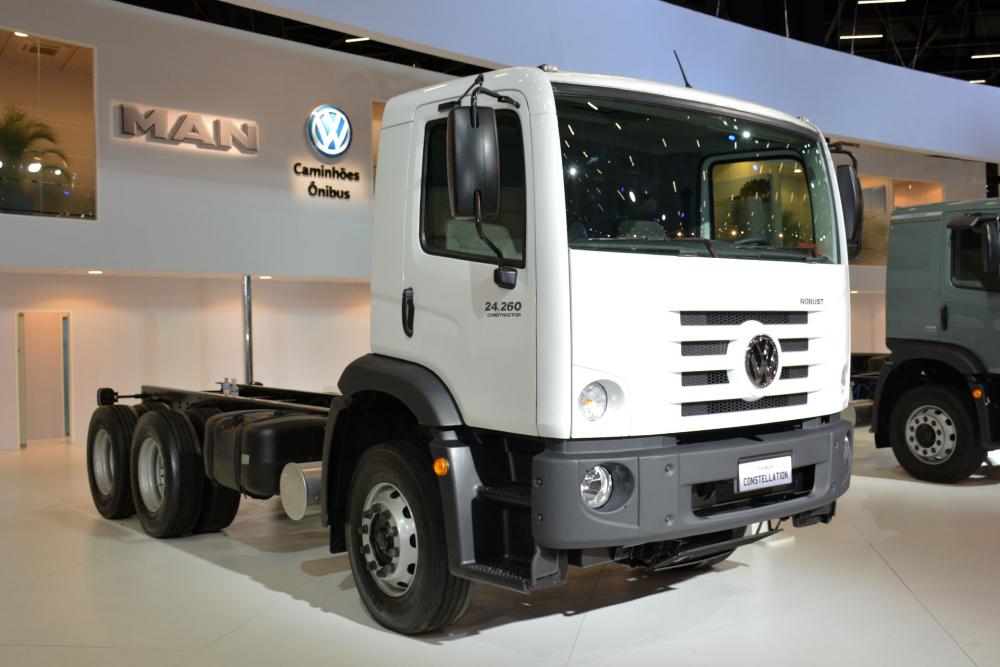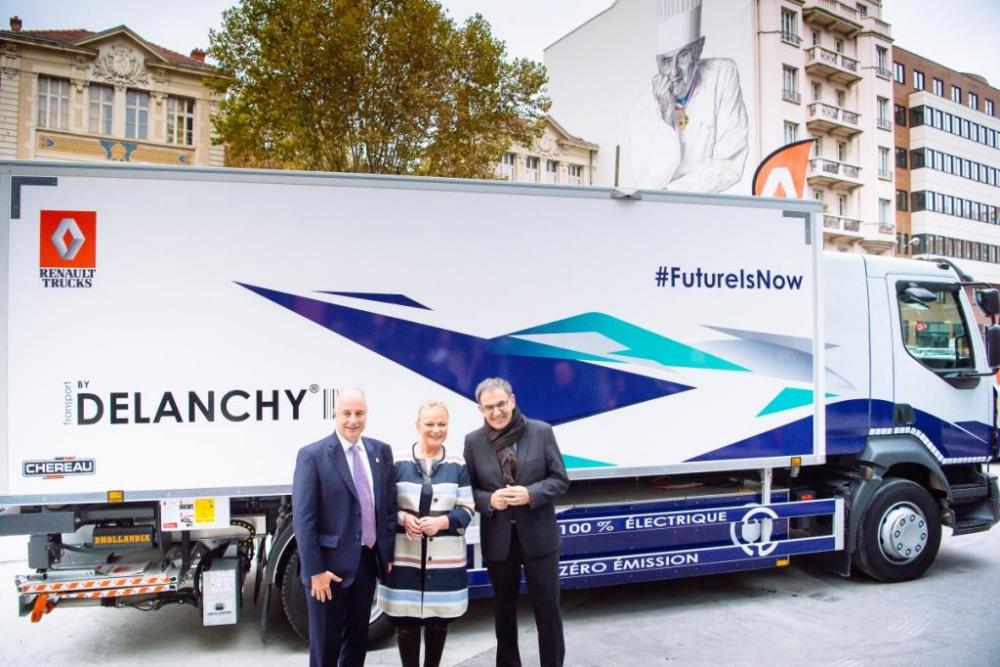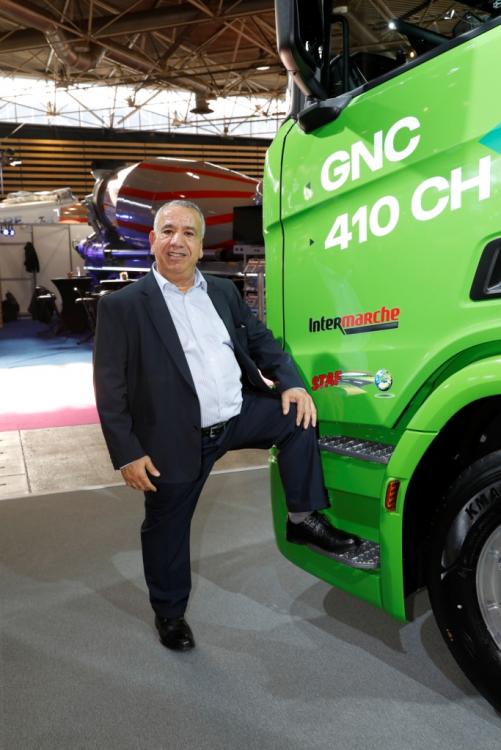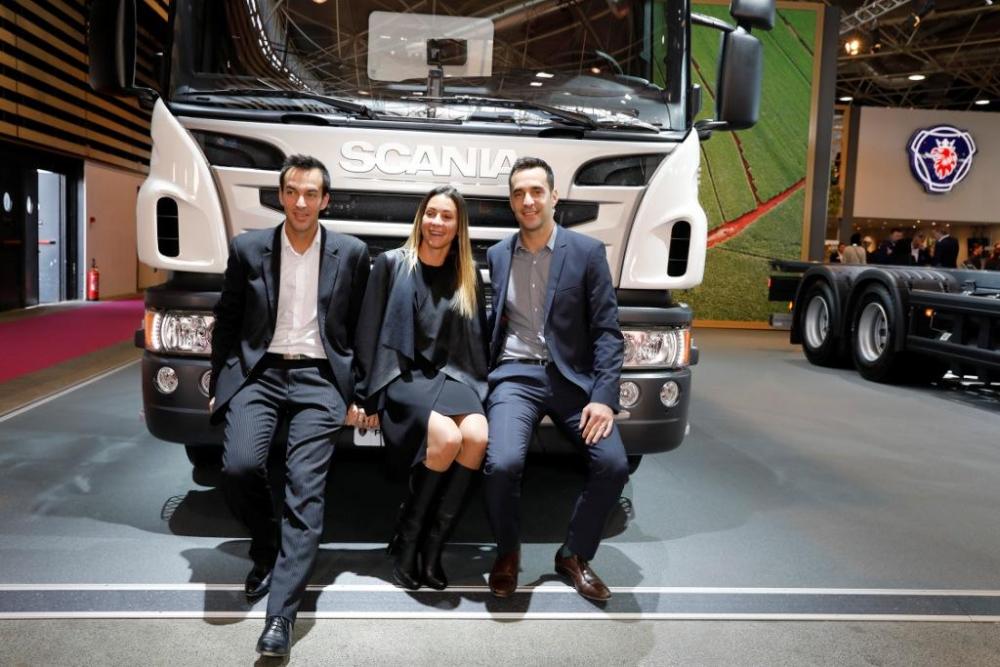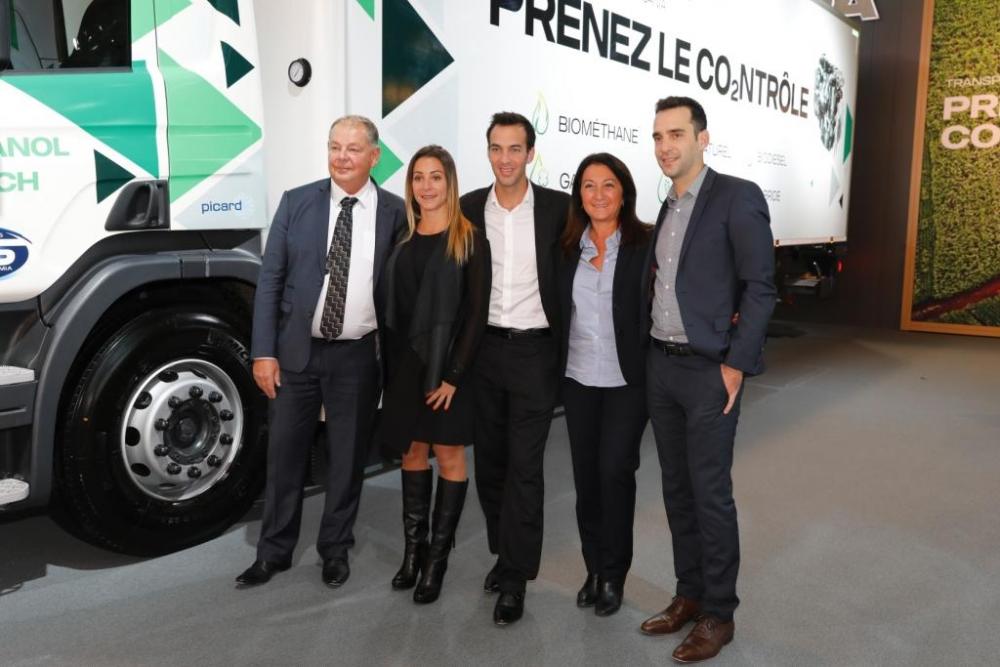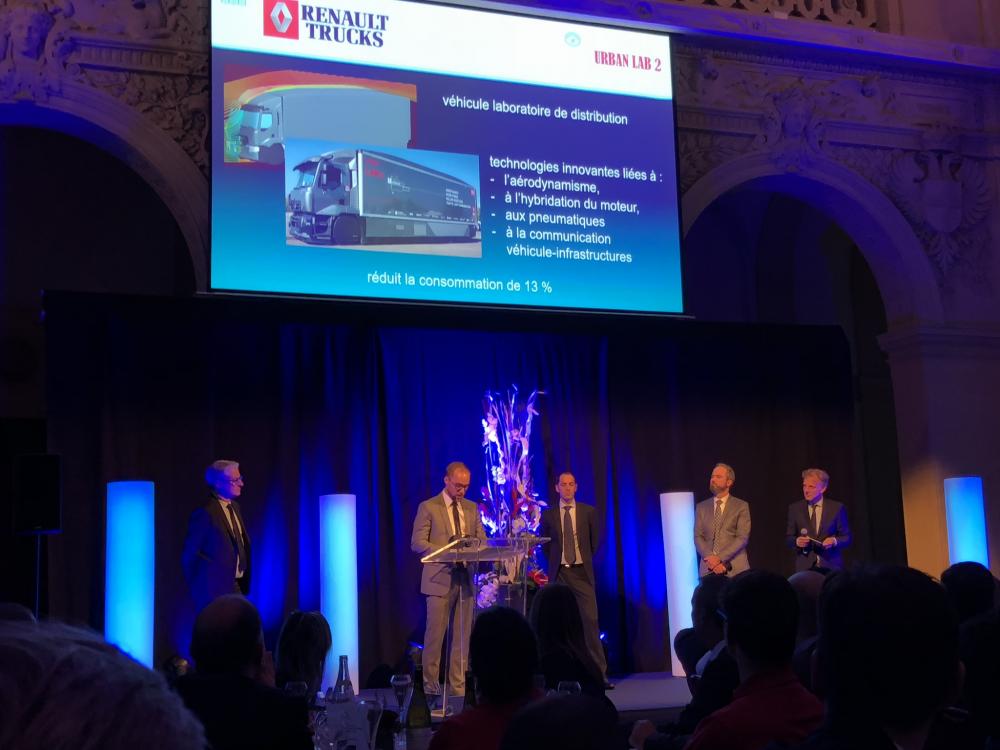
kscarbel2
Moderator-
Posts
18,905 -
Joined
-
Days Won
114
Content Type
Profiles
Forums
Gallery
Events
Blogs
BMT Wiki
Collections
Store
Everything posted by kscarbel2
-
Scania Group Press Release / November 27, 2017 Scania Touring has swept the board in the leading Italy-based European newsletter ‘BusToCoach’s’ comparative test of eleven 2-axle coaches from six bus builders. With 18.2 litres/100 km, Scania Touring’s fuel consumption was an impressive 12-percent lower than the runner-up and all of 31 percent better than the coach that performed poorest. BusToCoach lined up coaches from Irizar, Iveco, Mercedes, Setra and Temsa for a fuel duel that included 347 kilometres of varied road conditions in Lombardy, Piacenza and Liguria. The results for the Scania Touring HD 12.1-metre coach surprised even seasoned bus experts. “The results have exceeded all expectations in terms of consumption, plus a remarkably interesting purchase price,” the publication writes. “The consumption turned out to be better than any optimistic prediction.” The newsletter asks itself how this outstanding result was at all possible. It admits that the test was carried out in a relatively moderate average speed of 77.4 km/h and that the air conditioning was only in operation half of the time. Notwithstanding, BusToCoach found that the low fuel consumption could primarily be attributed to Scania’s 13-litre SCR-only engine, the automated Scania Opticruise and Scania Active Prediction. In addition to the fuel consumption, the newsletter praised Scania Touring for its “very good interior quietness for both passengers and the driver, and the well-finished trim.” .
-
Volvo - Autonomous truck for hub-to-hub transportations
kscarbel2 replied to kscarbel2's topic in Trucking News
-
I have installed this Jegs relay kit on my vehicles and found a significant difference, even with stock bulbs. http://www.jegs.com/i/Painless-Performance-Products/764/30815/10002/-1 I use Philips X-tremeVision bulbs because of the quality, enhanced range, and their being legal. (They're available on Amazon) https://www.powerbulbs.com/us/product/philips-xtreme-vision-130-h4-twin
-
Earhart was held on Saipan USA Today / November 26, 2017 HAGATNA, Guam — A man with ties to Saipan shared information that promotes a theory that Amelia Earhart was brought to the island and held prisoner 80 years ago. William “Bill” Sablan, who lives on Chamorro, said his uncle Tun Akin Tuho worked at the prison where Amelia Earhart and Fred Noonan were taken prisoner in Saipan. The History Channel shared the theory that the two were taken prisoner in a recent TV special called Amelia Earhart: The Lost Evidence. The theory says Earhart was captured and executed on Saipan by the Empire of Japan. The U.S. government and military knew it (and even found and exhumed her body). And both governments have been lying about it ever since. Sablan’s uncle’s story fits this theory. In 1971, he was speaking with his uncle and cousin about his dream of becoming a pilot when his uncle mentioned the people that were held prisoner in Saipan. His uncle described an American woman and man taken to a Saipan prison in the mid-1930s by ship. He said they were found with a plane on a southern Pacific Island under Japanese control. Sablan said Earhart was brought to Saipan, for it was a hub for the Japanese. His uncle said that he remembers the woman and man because Caucasian people were rare on Saipan. The prison was usually quiet, but the pair's arrival caused a commotion. “They had no reason to be there,” Sablan said. His uncle said the plane they were flying was dropped somewhere in the ocean before coming to Saipan. The uncle said that the two were in the Saipan prison for two or three days before they were killed. Sablan said it's possible the U.S. found and relocated the remains. According to news files, in 1960 a CBS radio man, Fred Goerner, spoke with at least a dozen reliable witnesses from Saipan, who shared that before the war, two white people arrived on Saipan — described as “flyers” or “spies” — and they were held in the Japanese jail. They said the flyers were tall and one of them was a woman, but her hair was cut short and she was wearing men’s clothing, files state. The year was 1937, the same year Earhart and Noonan were lost. The theory rests on an ambiguous photograph, said to have been taken in 1937, that might show Earhart and Noonan alive on a dock in the Marshall Islands. At the time, the islands were controlled by Japan.
-
The Ahrens-Fox(ECB/FCB)/Beck/Mack C-Series ranks in my mind as the most beautiful and functional fire apparatus we ever built.
-
Tesla electric semi's price is surprisingly competitive Engadget / November 23, 2017 Starting at $150,000, it's not much more than a regular semi and will cost less to run. When Tesla unveiled its semi electric truck last week, everyone agreed that it looked cool, but some actual truckers weren't necessarily sold on its functionality. Most observers will be impressed with the pricing if it holds, though. Tesla has listed estimated price on its Semi website for the 300- and 500-mile versions of $150,000 and $180,000 respectively, less than some pundits predicted. The high-spec Founders Series will cost $200,000. Looking at the $180,000 model, it's still around $60,000 more than a diesel-powered truck. However, the Tesla tractor could cost around 20 percent less to run, Tesla estimates, putting savings over a million miles at around $250,000. The Tesla truck will improve the trucker experience with an Enhanced Autopilot (automatic emergency braking, automatic lane keeping and lane departure warning) that will improve safety for drivers and other vehicles. It also features jackknife protection, sensors and cameras meant to reduce blind spots. For a truck it'll also have superb acceleration. Some critics are wondering how Tesla can sell the truck so cheaply. Some estimates have put the cost of the 1 MWh battery alone at up to $400,000, so as Electrek speculates, Tesla must have some new technology or other tricks up its sleeve to be able to make the economics work. Potential buyers aren't spooked by the unknowns, though -- Canadian grocery chain Loblaws was the first to jump onboard with a big order, and retail giant Walmart also plans to test the truck.
-
Another Diamond in the Rough
kscarbel2 replied to Dirtymilkman's topic in Antique and Classic Mack Trucks General Discussion
The big problem is the lack of good availability of 865/866 engine parts. -
Volkswagen Truck & Bus / November 10, 2017 Equipped with a V-Tronic automated manual transmission (AMT) and planetary hub reduction rear axles, the new model 32.360 is ideal for extreme operations in the construction and mining segments. The truck’s Cummins ISL engine, rated at 360 horsepower and 1,600 Nm of torque, is paired with a 16-speed ZF automated manual transmission. EBD works in conjunction with the truck’sABS system, distributing the braking force between the wheels of the vehicle. In addition to ATC, which prevents the wheels from skating, EasyStart enhanced terrain ascent and maneuverability in narrow and confined locations. The rear axles are fitted with inter-axle as well as intra-axle differential locks to overcome the most difficult terrain. "The vehicle is designed to run under the most difficult terrain conditions. Each detail was developed to meet requests from customers requiring the robustness and reliability of Volkswagen trucks, "says product marketing engineer Vinícius Arantes. The Constellation 24.260 "Robust" Tipper Constructor is another important new model, a 6x2 dedicated to the support operations in the off-road segment, with metal construction fenders, new engine calibration, Eaton transmission planetary hub reduction rear axle and mixed-use tires. This is an incoming truck for the operation, tailored to the application, with the best operational cost of the segment. The two new models increase the vocational contractor's family and will be available for sales from the beginning of 2018. Volkswagen Truck’s Constructor range represents the most robust in the portfolio of our vocational trucks, combining high-tech, high performance and service to meet the most demanding operational requirements. .
-
Paccar Australia's sales marketing is very good, and noticeably better than Paccar in the US.
-
Renault Trucks Press Release / November 17, 2017 Preparing for the future of urban freight transport together, Renault Trucks and Groupe Delanchy have just developed an all-electric truck equipped with a refrigerated box for delivering fresh produce. Groupe Delanchy will deliver produce to Les Halles de Lyon Paul Bocuse (France’s largest covered food market) using this low-noise, non-polluting 100% electric 13-tonne Renault Trucks D experimental vehicle. Groupe Delanchy, which specialises in temperature-controlled transport and logistics, and Renault Trucks, a pioneer in the field of electromobility, are continuing their collaboration that began fifty years ago. Throughout this time, Renault Trucks and Groupe Delanchy have always been focused on the future and have made clear their commitment to developing new technologies that are environmentally friendly. Today, in relation to electromobility, they have jointly developed this 100% electric experimental vehicle. It is equipped with a Chereau temperature-controlled box and a Carrier refrigeration unit, fully powered by the vehicle's traction batteries: a first on this type of truck. Although being an experimental vehicle, this 13-tonne electric truck will be used under real operating conditions in Lyon, the historic birthplace of Renault Trucks. This city has also played an important part in Groupe Delanchy’s history: with the introduction of its first route in 1968, fresh produce could to be transported from Lorient to Lyon in less than 24 hours. On a daily basis, the 100% electric Renault Trucks D will leave Groupe Delanchy's distribution hub in Corbas, in the suburbs of Lyon, to deliver seafood and fresh produce from Lorient to Les Halles de Lyon Paul Bocuse. “We are very pleased, in more ways than one, with the arrival of this new 100% electric truck,” explains Joseph Delanchy, President of Groupe Delanchy. "As part of our long-standing partnership with Renault Trucks, of course, but also in the commitment we have made to our customers, our employees and, more broadly, for future generations. This ‘zero-emission’ truck is a first step towards new technologies that are evolving very rapidly. We will evolve with them, as we have always done." "This partnership illustrates the robustness of the relationship we have with our customers," emphasises Bruno Blin, President of Renault Trucks. "The inclusion of this vehicle in Groupe Delanchy’s logistics plan perfectly illustrates our vision for road freight transport, namely a high-performance diesel vehicle for long distance transport and a zero-emission vehicle to cover the final kilometres". This zero-emission truck is the ideal solution for maintaining air quality and reducing congestion in the city centre, because it allows noise-free deliveries to be made during anti-social hours, maintaining peace and quiet for residents. Because it produces no polluting emissions, this vehicle also helps maintain the area in which the operatives are working, the unloading dock at the Halles de Lyon, which is a confined space in the basement.David Kimelfeld, President of the Lyon Metropolitan Area, says: "The Lyon metropolitan area supports and encourages all initiatives that seek to improve the quality of urban logistics, which lies at the heart of major challenges for the metropolitan area of Lyon, including businesses that depend on it, air quality and environmental noise, CO2 emissions, and traffic flow in the city centre. The community is also the first to have adopted a framework for deliberation that establishes a genuine public policy in favour of urban logistics.” This 100% electric rigid chassis vehicle will supplement the 700 Renault Trucks of the Delanchy, group. .
-
Mark, I generally don't care for conventionals to begin with (though Oz-spec Powerstars and Western Stars are nice). My preference was always the F Model and highly advanced MH Ultra-Liner. Versus the Volvo or Anthem, I'd rather be in a Cruise-Liner. Nowadays, though I'm biased towards the virtually perfect Scania range, many COE's meet my expectations.
-
U.S. secretly settles abuse on Capital Hill with taxpayer money
kscarbel2 replied to kscarbel2's topic in Odds and Ends
There is no better place to be a sexual predator than the U.S. Congress. Think Progress / November 21, 2017 Congress has created an elaborate system that protects sexual predators on Capitol Hill, including members of Congress and their staff. In the private sector and elsewhere in the government, victims of sexual harassment have the option of immediately filing a lawsuit and getting their grievances heard in court. But Congress has created a much different set of rules for victims who work on Capitol Hill. The 180-day statute of limitations to request “counseling” In order to pursue accountability for a sitting member of Congress for an alleged incident of sexual harassment or assault, a victim must file a written notice with the Office of Compliance within 180 days of the incident. If they don’t act within 180 days, they have no ability to pursue their claims. Furthermore, the form to file such a complaint is password protected; a victim must call the Office of Compliance to get the password to initiate the process. The 30-day “counseling” period After filing the complaint, the person alleging harassment or assault must participate in a 30-day counseling period. Yes, in Congress, the victims of sexual harassment must submit to counseling, as if there is something wrong with them. During this period, no one else — including the alleged harasser — is even notified the complaint has been filed. The Office of Compliance puts a sunny face on this process, saying it “provides the employee with an opportunity to assess his/her case before deciding whether to pursue the claim(s) beyond counseling.” In other words, the process starts with a 30-day waiting period in which the victim is given the “opportunity” to consider dropping the entire matter. The 15-day statute of limitations to request mediation After going through the counseling process, the alleged victim has just 15 days to file a request for mediation. If they fail to do so, the claim is extinguished. The form to request mediation is also password protected and must be obtained from the Office of Compliance. The 30-day mediation period After the counseling process, the alleged victim is still prohibited from filing a case in court. Rather, they must enter mandatory, confidential mediation which lasts at least another 30 days. The mediation period involves “the employing office, employee, and [Office of Compliance] mediator.” The purpose of the mediation, according to the Office of Compliance, is to “resolve the dispute.” The individual alleging harassment or assault is also required to keep this mediation secret. “All mediation shall be strictly confidential, and the Executive Director shall notify each person participating in the mediation of the confidentiality requirement and of the sanctions applicable to any person who violates the confidentiality requirement,” according to the poorly named Congressional Accountability Act, which governs the process. The alleged perpetrator may not even be involved in this process, even if the claim is settled. John Conyers, whose case was settled through mediation, claimed he was unaware of any allegations against him — although sources tell BuzzFeed he did know [of course he was told]. There are also indications of misconduct within the Office of Compliance. Conyers’ settlement was confidential but documents were leaked to BuzzFeed. The taxpayer-funded sexual harassment settlement As part of the mediation process, the parties can reach a settlement to resolve the dispute. But this settlement is not paid by the person who actually conducted the sexual harassment. Rather, the settlement is paid by you, the taxpayer. “Only funds which are appropriated to an account of the Office in the Treasury of the United States for the payment of awards and settlements may be used for the payment of awards and settlements under this chapter,” the Congressional Accountability Act states. This is why Conyers did not have to pay a penny of his own money to settle claims against his alleged victims. According to the Washington Post, the Office of Compliance has paid more than $17 million over the past two decades to settle complaints regarding violations of workplace rules, including but not limited to sexual harassment cases. But BuzzFeed’s reporting indicates this doesn’t get at the scope of the problem. At least one settlement with a woman who alleged Conyers harassed her was paid from Conyers’ office budget, not from the Office of Compliance. The 30-day waiting period and 60-day statute of limitations for filing a complaint After making it through counseling and mediation, the victim must wait 30 days before doing anything. It’s unclear what this waiting period is for, other than to pressure the victim to accept a settlement offer or drop the claim. The victim then has just 60 days to either file an administrative complaint with the Office of Compliance or file a case in federal district court. The form to file an administrative complaint is also password protected. If the victim does not take any action within 90 days of the end of mediation, the claim is extinguished. The secret administrative hearing The administrative proceeding, unlike a federal court case, is also confidential and presents another opportunity for a perpetrator to keep the allegations secret [Why?]. The hearings are closed to the public [Why?]. (The hearing officer is empowered to dismiss any claim without a hearing if he or she judges the claim to be “frivolous.”) The responding party is not the individual that engaged in sexual harassment, but the office that employed that person. A record of the proceedings are only made public if the victim is successful. If the victim disagrees with the decision, he or she must appeal first to the board of the Office of Compliance. After the Office of Compliance issue their decision, the victim may appeal to the United States Court of Appeals for the Federal Circuit. That means there will be no independent evaluation of the evidence, rather the appeals court simply reviews for arbitrary or capricious application of the law, a very high legal standard. If the victim wins in the administrative hearing, the payment is made from taxpayer money. They are not entitled to receive civil penalties or punitive damages under the law. This keeps both the awards and the settlements fairly low. Over 20 years, Congress has paid $17.1 million to 264 victims, a figure that includes sexual harassment and other forms of discrimination — an average award of about $65,000. A federal case against a congressional office, not the person engaging in sexual harassment After all this, a victim still cannot sue a member of Congress or other staff member who engaged in sexual harassment [Why?]. Rather, if a victim chooses to forgo the administrative hearing, he or she can file a federal case against the office where the sexual harassment allegedly occurred. In this case, victims are still not entitled to civil penalties or punitive damages. This makes the choice to file a suit, in most cases, prohibitively expensive since even a successful case will not bring in a large award. Whatever money is awarded still is not paid by the sexual harasser but by taxpayers. https://thinkprogress.org/sexual-predator-congress-0802dc2ef524/ -
C'mon Mark. I just post the truck news.....I don't make it.
-
Today's Trucking / November 22, 2017 . .
-
Scania Group Press Release / November 23, 2017 First Scania 13-litre compressed gas truck is instant hit with French haulier. With its strong environmental goals, it is not surprising that French food distribution haulier STAF was eager to become Scania’s first customer for the new 13-litre compressed gas engine truck. “I’d like to get at least another 50 vehicles as soon as Scania can deliver,” says owner and Managing Director Kara Mendjel. With its fleet of 650 temperature-controlled trucks and more than 500 drivers, STAF is the leading distribution haulage company in the Paris region. With the prospect of the city of Paris phasing out diesel by 2025, STAF is starting to renew its fleet; by the end of this year it will have some 65 gas trucks in operation. Gas replacing diesel in French cities Gas is increasingly being seen as the primary alternative to diesel in major French cities. Today, there are ten filling stations in the Paris region but by as soon as next year the number will grow to 25. “We’re really seeing a rapid development in gas,” Mendjel notes. At filling stations, vehicle owners can select between the slightly more expensive biogas, with carbon emission reductions of up to 90 percent, or natural gas, with CO2 savings of up to 15 percent. Regardless, both alternatives offer a 50-percent reduction of nitrogen oxide emissions and 40 percent lower emissions of particulate matter. “There are approximately 13 million residents in the Paris region and operating trucks on gas will definitely improve the environment and the quality of life for Parisians,” says Medjel. First Scania gas truck being deployed The first Scania 410 hp truck will be deployed for deliveries to Carrefour, Leader Price, Franprix, Casino, Monoprix, Simply Market, Leclerc and Intermarché supermarkets. “There’s always an element of risk in being the launch customer but I have full confidence in Scania and the brand’s record in powertrain excellence,” concludes Mendjel. .
-
- 1
-

-
Scania Group Press Release / November 22, 2017 First came Nicolas, then Jérôme and finally Sophia. Today, the Faramia triplets have reached the age of 31 and are all active in the family transport business that bears their initials, Transports NJS Faramia. With the motto “The environment lies at the heart of our concerns”, the family has taken the bold decision to become France’s first haulage company to deploy a Scania ethanol truck. The truck will be used for temperature-controlled deliveries in the Marseille area. Given the company’s green philosophy, the Faramia family has high hopes for ethanol, with its 90-percent reduction of carbon emissions, 50-percent fewer emissions of nitrogen oxide and 70-percent less particulate matter. Having introduced ethanol engines in the 1980s, Scania has ample experience of the fuel, and has now released its fourth-generation ethanol engine. Faramia will have its own ED95 filling pump at their main depot in Vitrolles. The ED95 fuel will be produced from pomace – the residue from grape pressing – from local wineries. The pomace will be collected and processed by Union des distilleries de la méditerranée in Vauvert, near Montpellier. “Another big step towards becoming fossil free” Heavy vehicle-grade ED95 fuel was granted favourable taxation status by the French Government earlier this year. Ethanol qualifies for the highest environmental level in the French Crit’Air air quality vehicle certification scheme, which is in force in major French cities. “We already have gas trucks and now we’re taking another big step towards becoming fossil free,” says Jérôme Faramia. “Ethanol is the most abundant alternative fuel in the world and we see a great potential.” The truck will be used in deliveries for the French international frozen food retailer Picard, which has more than 1,000 shops in France as well as operations in six other countries. Picard is equally excited about the new venture and will be avidly following its progress. Meanwhile, the Faramia family will closely monitor performance and cost. “If the truck performs as expected, I can easily imagine that one-quarter of our trucks can run on ethanol,” says Jérôme. .
-
Volvo Trucks Press Release / November 22, 2017 Nikolai Goncharov drives his Volvo FMX through the remote Siberian landscape. Here the forces of nature must be challenged, both by driver and truck. Follow his journey as he takes on 120 kilometres of uncertain Russian forest roads. “We don’t have roads here – we just have a direction.” .
-
Solutrans innovation Awards: Urban Lab 2 receives the Low Emission Driveline Award Renault Trucks Press Release / November 22, 2017 Renault Trucks has won the “Low Emissions Driveline Award” for its laboratory distribution vehicle, Urban Lab 2. This prize, awarded by the LUTB Transport & Mobility Systems cluster and the PFA Automotive Industry and Mobilities, as part of the Solutrans Innovation Awards, was presented to the manufacturer at the Lyon Chamber of Commerce and Industry on 21 November 2017. On Tuesday, 21 November 2017, at the Lyon Chamber of Commerce and Industry, Renault Trucks was presented with the "Low Emissions Drivetrain Award" for its laboratory distribution vehicle, Urban Lab 2. This prize, awarded as part of the Solutrans Innovation Awards 2017, is organised by the LUTB Transport & Mobility Systems cluster and the PFA Automotive Industry and Mobilities and recognises a significant breakthrough or innovation in the powertrain of transport vehicles. Receiving this award, François Savoye, Energy Efficiency Strategy Director at Renault Trucks, reminded those assembled that the diamond-badged manufacturer focused most of its Research & Development efforts on reducing emissions. “Diesel now provides an effective response to the needs of the road freight transport sector. Urban Lab 2 demonstrates the untapped potential that still exists, particularly with hybridisation.” In addition to engine hybridisation, Urban Lab 2 combines innovative technologies associated with aerodynamics, tyre performance and vehicle-to-infrastructure communication with the aim of reducing fuel consumption by 13%. The Urban Lab 2 laboratory vehicle is the result of the EDIT (Efficient Distribution Truck) collaborative project, financed by the Single Inter-Ministry Fund, Auvergne Rhône-Alpes Region, Métropole de Lyon, Ain Department Council and the FEDER. Designed based on a 19-tonne Renault Trucks D WIDE Euro 6 diesel, Urban Lab 2 targets the urban and regional distribution sector and its on-board technologies have been developed in conjunction with six partners: Valeo, Lamberet, Michelin, BeNomad, INSA Lyon (LamCoS) and IFSTTAR (LICIT). .
-
Renault Trucks Press Release / November 23, 2017 Renault Trucks is a pioneer and has a century of experience in electro-mobility. The manufacturer is developing and testing several types of technologies in real operating conditions in collaborations with its customers. Hybrid technologies and 100% electric have been integrated to several types of vehicles: from 3.5 tons up to 16 tons. Our ambition is to prepare zero-emission solutions, profitable for our customers, by 2020. .
-
BigMackTrucks.com
BigMackTrucks.com is a support forum for antique, classic and modern Mack Trucks! The forum is owned and maintained by Watt's Truck Center, Inc. an independent, full service Mack dealer. The forums are not affiliated with Mack Trucks, Inc.
Our Vendors and Advertisers
Thank you for your support!


